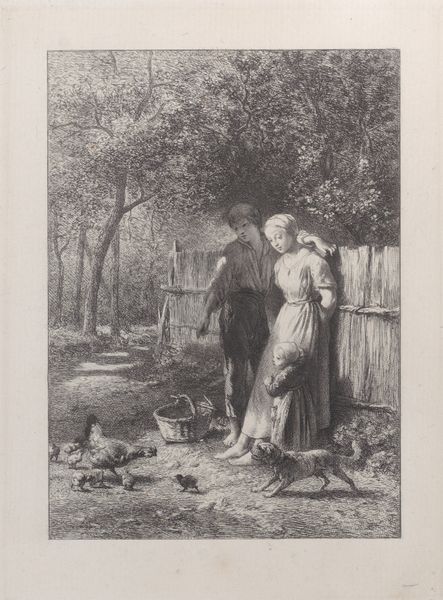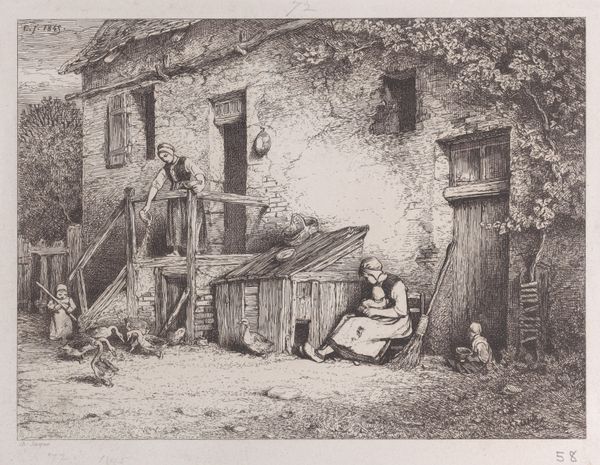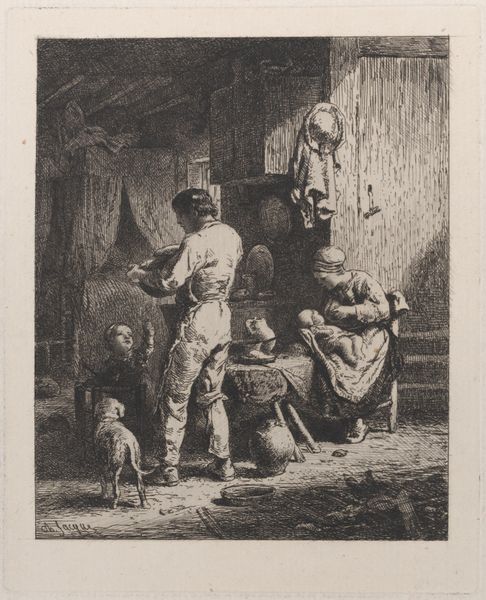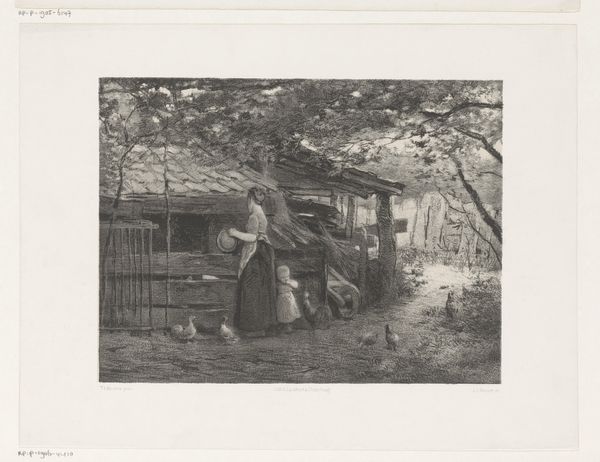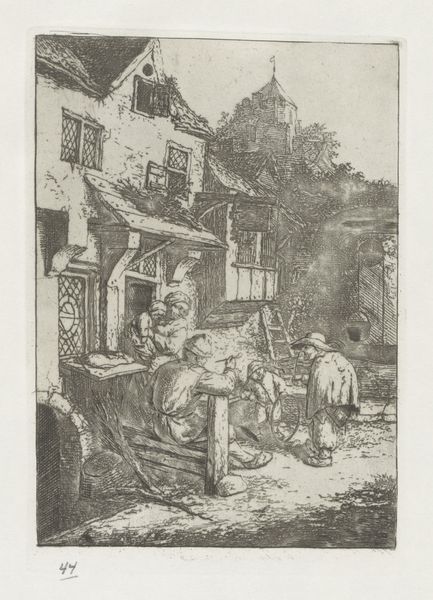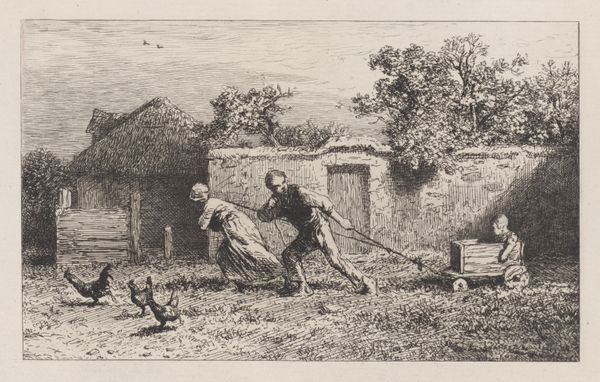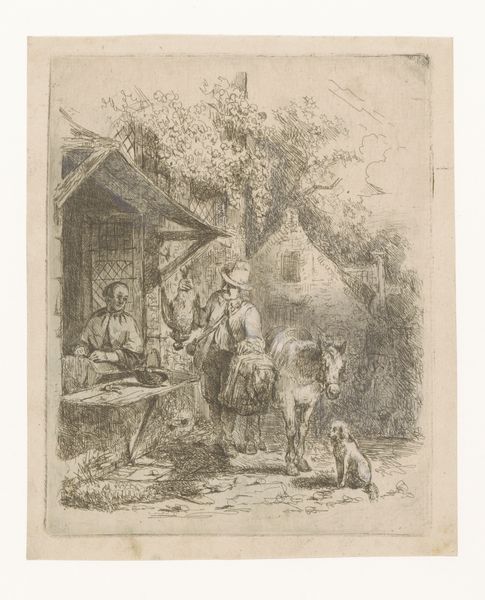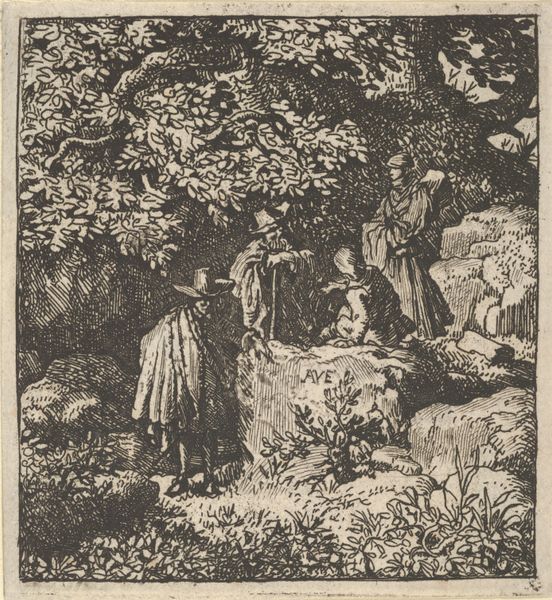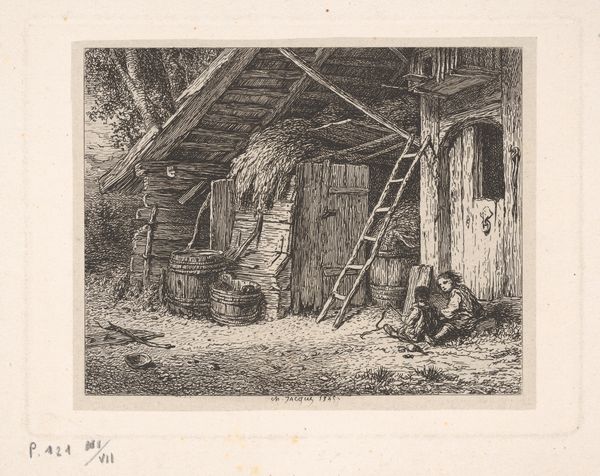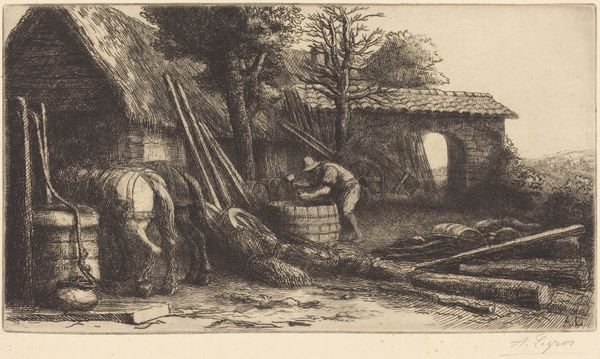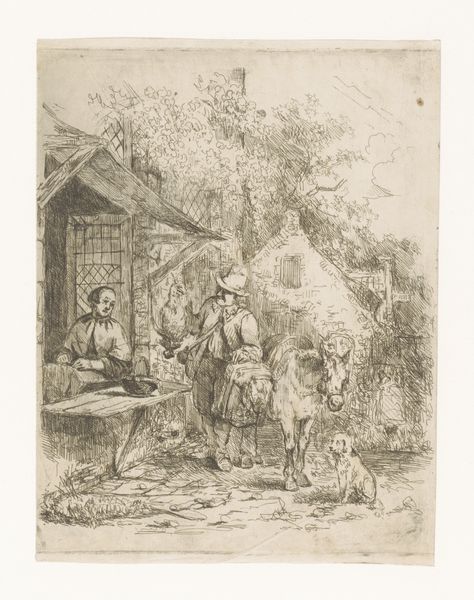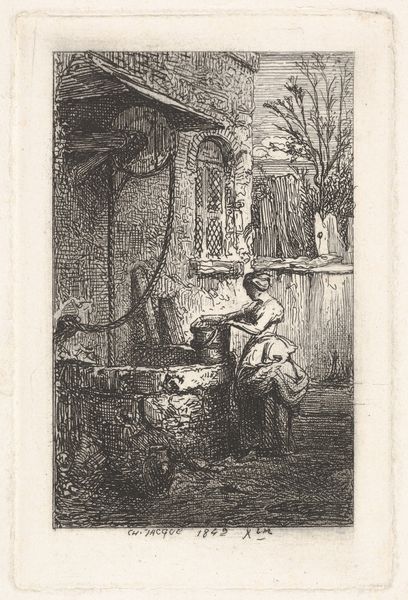
drawing, print, etching
#
drawing
# print
#
etching
#
landscape
#
men
#
genre-painting
#
realism
Dimensions: Sheet: 18 13/16 × 13 3/16 in. (47.8 × 33.5 cm) Plate: 8 1/4 × 5 1/8 in. (21 × 13 cm)
Copyright: Public Domain
Curator: This etching by Charles Jacque, created in 1864, is entitled "Summer" and resides here at The Met. I’m immediately struck by how evocatively it captures a rustic, rural atmosphere, a real sense of quiet and connection to nature. What are your initial thoughts? Editor: There’s a sort of idealized stillness about it, isn’t there? The light feels soft and enveloping. The image also brings to mind similar pastoral scenes, not just images, but actual stories, carrying familiar themes of rural harmony. Curator: Charles Jacque, one of the key figures in the French Realist movement, wasn’t afraid to focus on ordinary life, and elevate rural scenes to the level of high art, moving it from Romantic landscapes into Realist Genre painting. It really changed the status and perception of agricultural labor in art. Editor: Absolutely. And he uses very powerful visual shorthand here. Consider the sheep, almost symbolic of gentleness, obedience. The shepherd watching over them seems almost like a benevolent guardian figure – reminiscent of classical images. Then there's a single feline presence resting on top of the hay barn. This symbolizes that these people exist harmoniously with nature and wild animals. Curator: Yes, the imagery taps into an established visual language, doesn't it? It’s interesting to consider this within the broader context of 19th-century France. The art world in Paris was dominated by depictions of Parisian culture and life, while he created the opposite: a look at peasant life and hard rural labor that also felt both calming and almost timeless. Editor: Time almost stands still here; despite the small number of details, a single moment holds several emotional concepts for those looking for a greater message within an image. Curator: Jacque’s background played a role, he actually trained as an engraver initially. Which led him to develop a deep understanding of line and tone, crucial in conveying textures like wool, wood, foliage, capturing their forms but also, their feeling, a tactile experience to be shared. Editor: This etching allows you to contemplate nature and man. I was caught up in it. You start finding little symbolic details; each object adds another level to understanding and analyzing this landscape, this time and period, as seen by the artist and filtered through their skills to become what is now the art. Curator: I agree completely, an interesting perspective on social hierarchy at that point in time. Thank you! Editor: My pleasure.
Comments
No comments
Be the first to comment and join the conversation on the ultimate creative platform.
